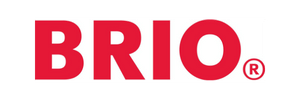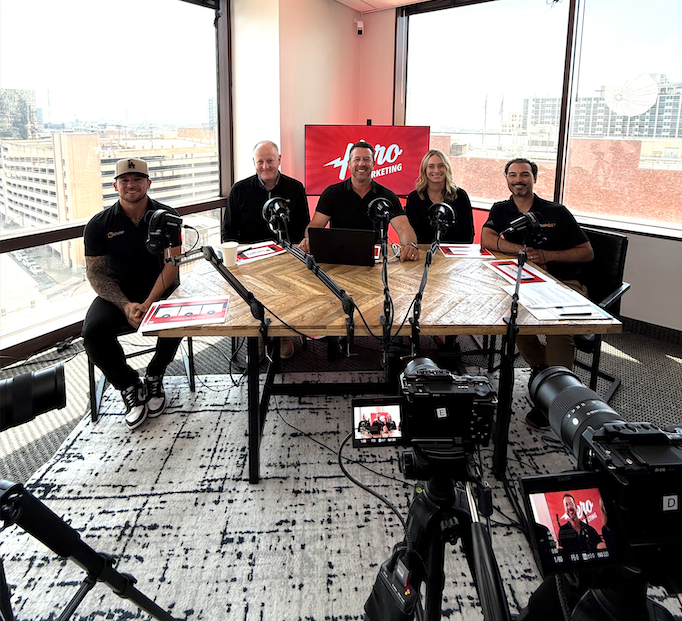Stand Out From the Rest: Creating a Great Reputation
It can seem like your reputation is entirely dependent on your past, which you cannot change, and on your environment, which is extremely difficult to change. However, your reputation is quite malleable if you play your cards right.

“During China’s War of the Three Kingdoms (A.D. 207-265), the great general Chuko Liang, leading the forces of the Shu Kingdom, dispatched his vast army to a distant camp while he rested in a small town with a handful of soldiers. Suddenly sentinels hurried in with the alarming news that an enemy force of over 150,000 troops under Sima Yi was approaching. With only a hundred men to defend him, Chuko Liang’s situation was hopeless.
— Greene
But, Liang was clever. Sima Yi understood the man’s impressive legacy, of deception, manipulation, and unlikely victory. Knowing this, Liang wagered that Yi’s fear of his reputation could intimidate the general out of trying to capture him.
“[Liang] took a seat on the most visible part of the city’s wall, wearing a Taoist robe. He lit some incense, strummed his lute, and began to chant...Soon the army stood at the town gates. At its head was Sima Yi, who instantly recognized the man on the wall...Sima Yi hesitated, held them back, and studied Liang on the wall. Then, he ordered an immediate and speedy retreat.
— Greene

Liang cultivated a reputation so powerful that not even 150,000 soldiers dared challenge it. If you can create a reputation that will wow your customers, then you alone, like Liang, will beat out the millions-strong army of competitive ads, every single time.
It can seem like your reputation is entirely dependent on your past, which you cannot change, and on your environment, which is extremely difficult to change. However, your reputation is quite malleable if you play your cards right. In this guide, we’ll walk you through how to create, mold, and maintain an amazing reputation.
This article is part of a 4-part series based on concepts from The 48 Laws of Power by Robert Greene. If you haven’t given it a read, we’d highly recommend it. It’s linked at the end, along with the other parts of this series.
Let’s get started.
REBIRTH: THE BEGINNING
Every great painting begins with a fresh canvas.
If your reputation is damaged or your company is undergoing great change, rebrand yourself. You are a new business. Same reliability as the old (if you have good history), but with new values and a new mission. If the market tries to force a certain role upon your business, refuse to play it if it does not benefit your goals. If your reputation is permanently stained, associate yourself with something that contradicts the negativity to soften your image. In short, do whatever is necessary to take control of how the market views you.
Your reputation is your most valuable asset. It will make and break you. Do whatever is necessary to build it. Then, guard it at all costs.
STAND OUT FROM THE CROWD
This should come as no surprise. To be seen at all in a competitive market, you must appear different from those around you.

Become known for something. Brands like Gucci and Rolex are known for their high prices, Honda and Toyota for reliability, and Apple for its seamless user experience. This makes customers feel secure in your products before they’ve even tried them. Someone buying a Rolex knows it will make them look rich. Someone buying a Honda Civic knows they can drive it for a decade. Someone buying an iPhone knows it will be easy to use.
Do they really? No. But your customers will trust the crowd’s experiences and opinions almost as much as their own. Create anecdotal certainty through this, and people will be drawn to you.
Two paths will lead to this effect: building a unique product or building a strong brand name outside of it. Both will help you; the more you have of one, the less you need of the other. When you market, lead with whatever you have more of.
PRODUCT
If your product already stands out, congratulations. You’re set. Advertise with authority, let the standout features take center stage, and you will quickly become known for your feature.
Want to make your product unique? We’ve got two strategies.
First, give yourself extensive power; entrench your brand into your customers’ lives. Use integrations, brand partnerships, additional products, resources, or anything else you can think of to provide less of a product and more of a solution. Your product should immediately unlock a slew of quick add-ons and upsells that ensure every aspect of your customer’s problem can be solved in a way that involves your brand. Sell a lifestyle rather than a product, and you automatically stand out.
You could also use a “free prize”, Seth Godin’s prescription for making a product stand out. Think of a Happy Meal. The product is the food, but little kids get far more excited about the small toys that come with it. Plastic toys wouldn’t work in most businesses, but any other added feature, a show of effort, or a resource that comes with your product will serve the same purpose. A “1-month free” ad for a lease? Free prize. “One lucky customer will win a new BMW” for buying chips at the local casino? Free prize. Even great customer service can act as a free prize.
Short on time? Our handwritten notes add a ton of value to the customer experience, and they’re fully automated so you won’t need to do any work. Check them out here.
BRAND NAME
When building a brand name, focus on ‘why’. Why do you sell your products? Why do you exist, aside from selling your products? Why should customers support you? Why do you stand out from the rest?
Strong values and a mission allow you to hit all of these with the same answer. They provide a purpose for your brand and make you stand out while giving your customers a unique reason to support you. Find an audience whose beliefs align with yours, and you can build a connection with them, indirectly and at scale.
“Our mission is to make men awesome through amazing content and class-leading products. Take time to invest in yourself and treat yourself to some great Beardbrand products.
— Beardbrand
Eric Bandholz’s Beardbrand was born out of a desire to create a community for “urban beardsmen” (guys with beards) to connect and educate themselves on men’s grooming. Their foundation of great content and a clear mission helped them grow incredibly fast. Today, they have a content-driven social media presence that funnels in over 500,000 visitors per month and covers nearly every aspect of men’s grooming. Thought leadership is a great foundation for your reputation; the same man who trusts Beardbrand’s barbers on their haircut advice would probably trust Beardbrand’s ads on the unique benefits of their grooming oils. They become known for quality information, so all their information is preceded by the assumption of truth and good intentions.
Content isn’t the only avenue you can pursue a mission through.

Patagonia uses a “Worn Wear” program to upcycle used clothes and keep them out of landfills, and also puts 1% of its revenue towards preserving and restoring the environment.
It doesn’t matter what you do; as long as it relates to your mission and can attract people, it will attract the right ones for your brand. Beardbrand’s customers are its mission. They participate in it by improving themselves and helping other people. All of Patagonia’s customers can feel good knowing 1% of their purchase helps the planet, and the especially driven ones can trade in old clothes to help in another way. It comes down to this: Let your customers actively and directly pursue something greater than themselves by engaging with your brand.
Giving the market a sense of purpose, through you, is the surest way to keep the crowd growing, keep your reputation rock-solid, and keep your customers coming back.
OWN YOUR NICHE
When a customer first hears about you, it’s important that they not only know what you do, but who you do it for. Specializing in a niche or group of niches is just like specializing in a product. You automatically gain some authority in the niche; people assume you understand it well.
Consider two statements: Calling all middle-aged women! and Calling all 40-45-year-old female doctors! Sure, the first one objectively relates to more people, but the second would get far more attention from those that it did target. So, talk to people as specifically as you can; show them you know their unique problems. Your audience will quickly come to trust you if they feel understood.
If your audience spans more than one niche, split it up into a few groups before you market to them. If you own a skincare brand, for example, you could split your marketing up by age. If you own an info product business, you can split it up based on interests.
When you market, make the specifics your top priority.
The products/services that your company provides will solve one major umbrella problem. This problem is large and contains multiple subsets of problems; each is unique to a specific group of people. Everyone has different goals for their skincare routine, but everyone still wants clear skin. When you market to a specific niche, find their unique subset of problems, under the umbrella of the larger one, and lean into them when you present your product. This allows you to market to a large audience, and solve a large problem, while still making your customers feel individually catered to and understood.
Own your segment of the market through bold and assertive headlines. If you’ve created a better way for marketers to send cold outreach, don’t be passive about it. Change your headline from “CompanyA helps marketers scale their outreach” to something like “CompanyA: It’s how marketers 10x their outreach”. While you’re at it, use the strategy from before. Make this headline specifically for B2C SaaS marketers. “CompanyA. It’s how B2C SaaS marketers 10x their outreach”. Much better.
Be assertive, be specific. Own your niche. People will notice.
MAINTAIN ORIGINALITY
We mentioned this earlier, but it needs reiterating. You must be different from those around you to be distinguishable from them. You must be very different from those around you to be known for something.
Remember: You must be known for something to have a reputation for anything, meaning originality is mandatory.
Never attempt, under any circumstances, to imitate or piggyback off the legacy of another. The brand which comes first is always seen as more original, and better. It is no secret to customers that the copycats who follow are just hoping to steal a slice of the first brand’s massive pie.
To be fair, it’s useful to take some inspiration from your competitors, but whenever you aim to follow someone else’s strategy, maintain plausible deniability. Create a believable excuse for following them, or make your version different enough that you don’t draw suspicion at all.
BUILD YOUR STRENGTHS, DON’T DWELL ON YOUR WEAKNESSES
Everybody has weaknesses. Obsessing over your business’ minor shortcomings will not change the fact that your business will always have shortcomings. If you have a gaping hole in your business, that desperately needs fixing, you will know. In the meantime, spend all your energy on getting better at what you do best.
Focus on building either your product or your brand name; not both at once. If you can grow one of them enough, it will make you stand out far more than being well-rounded. Every business tries to be well-rounded. Not every business tries to maximize its strengths.
If you’re an Olympic sprinter, you train for speed. You won’t waste a second trying to build great endurance. Follow this philosophy with your business, and your continual growth will compensate for any flaws that you had to leave alone.
HONESTY IS A TOOL: USE IT WISELY
Most people wear their hearts on their sleeves.
They openly broadcast their thoughts, actions, and lives. Companies are the opposite. They keep almost all of their information hidden, and their customers know it. This is a good thing. Just as someone only needs to keep a few things quiet to be known for secrecy, your business only needs a few well-timed acts of transparency to appear honest and trustworthy.
If you’ve been in sales, you’ll know that telling the customer something negative first will help them perceive the positives that follow as more honest and accurate. The same applies here. Be honest with something that your business is working on, something unflattering but not a dealbreaker, and the benefits that you advertise afterward will seem all the more believable. It will humanize your brand and allow your customers to relate to you, in a way.
To be human is, after all, to be flawed.
The strategy of selective honesty carries the biggest benefit in its name: it lets you be selective. Carefully choose what you reveal to craft a great public image. The gesture of revealing something rather than nothing will act as a smokescreen to hide anything that you need to work on outside the public eye.
You can choose how transparent you wish to appear, but you must be transparent enough for your customers to trust you. We all know that being caught lying to your customers is a killing blow, but even the suspicion that you are lying will create a similar effect. Thus, avoiding suspicion and scrutiny (keeping your reputation spotless) is the main purpose of selective honesty.
Know that as your reputation strengthens, you will gain opponents. Some customers will love you for leaning into certain values, others will hate you for it. But if you try to straddle the diverging cliffs, you will simply fall into the ravine. Trying to fight the pink tax and reform the education system at the same time will force you to give a partial effort to both, weakening your foundation and your ability to connect with either movement. Nor can you choose to take no side; a formless business is invisible to the market. Pick a side, stick to it, and even those who despise you for your goals will have to admire the unwavering commitment to your mission.
You must truly connect with customers to survive the relationship-centric era. So, give your audience a cause and use it to unite them with you. Your reputation precedes you; having an honorable mission means you will always be preceded by virtue.
Go to great lengths to support your values, to make your products great, and you will be surprised at the lengths your customers will go to support you.
LINKS
Attention is Everything: Winning the Crowd With Great Publicity
Patience, Perception, Pressure: How to Utilize Time
Status, Dependency, Friendship: Fostering Lifetime Loyalty
Read more insights
-min.png)
Get expert insights for real mail campaigns
Everything you need to launch, run and scale handwritten card mail campaigns. Subscribe today!
































Ready to create your first magic moment?🚀
Start using IgnitePOST today. It's free to signup!
No contracts, no commitment and unbelievable support.
.svg)







.png)